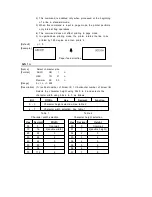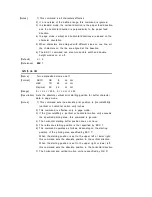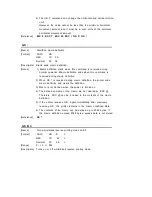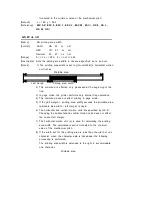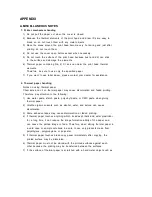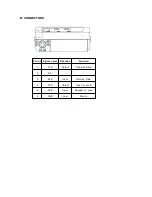
prints the bar code after receiving 13 bytes bar code data and
processes the following data as normal data.
4) When the bar code system used in JAN8(EAN8), the pritner prints
the bar code after receiving 8 bytes bar code data and processes
following data as normal data.
5) The number of data for ITF bar code must be even numbers.
When an odd number of data is input, the printer ignores the last
received data.
6) n indicates the number of bar code data, and the printer
processes n bytes from the next character data as bar code data.
7) If n is outside of the specified range, the printer stops command
processing and processes the following data as normal data.
8) Be sure to keep spaces on both right and left sides of a bar code
Spaces are different depending on the types of the bar code.
[Reference]
GS h, GS W, GS w
GS w n
[Name]
Set bar code width
[Format]
ASCII
GS
w
n
HEX
1D
77
n
Decimal
29
119
n
[Range]
2 <= n <= 3
[Description]
Set the horizontal size of the bar code.
n specifies the bar code width as follows.
1) Multi level bar codes are as follows
UPC-A, UPC-E, JAN13(EAN13), JAN8(EAN8), CODE93, CODE128
2) Binary level bar codes are as follows
CODE39, ITF, CODABAR
[Default]
n = 3
n
Module width for
multi level bar code
Binary level bar code
Thin element width(mm) Thick element width(mm)
2
0.282
0.282
0.706
3
0.423
0.423
1.129





